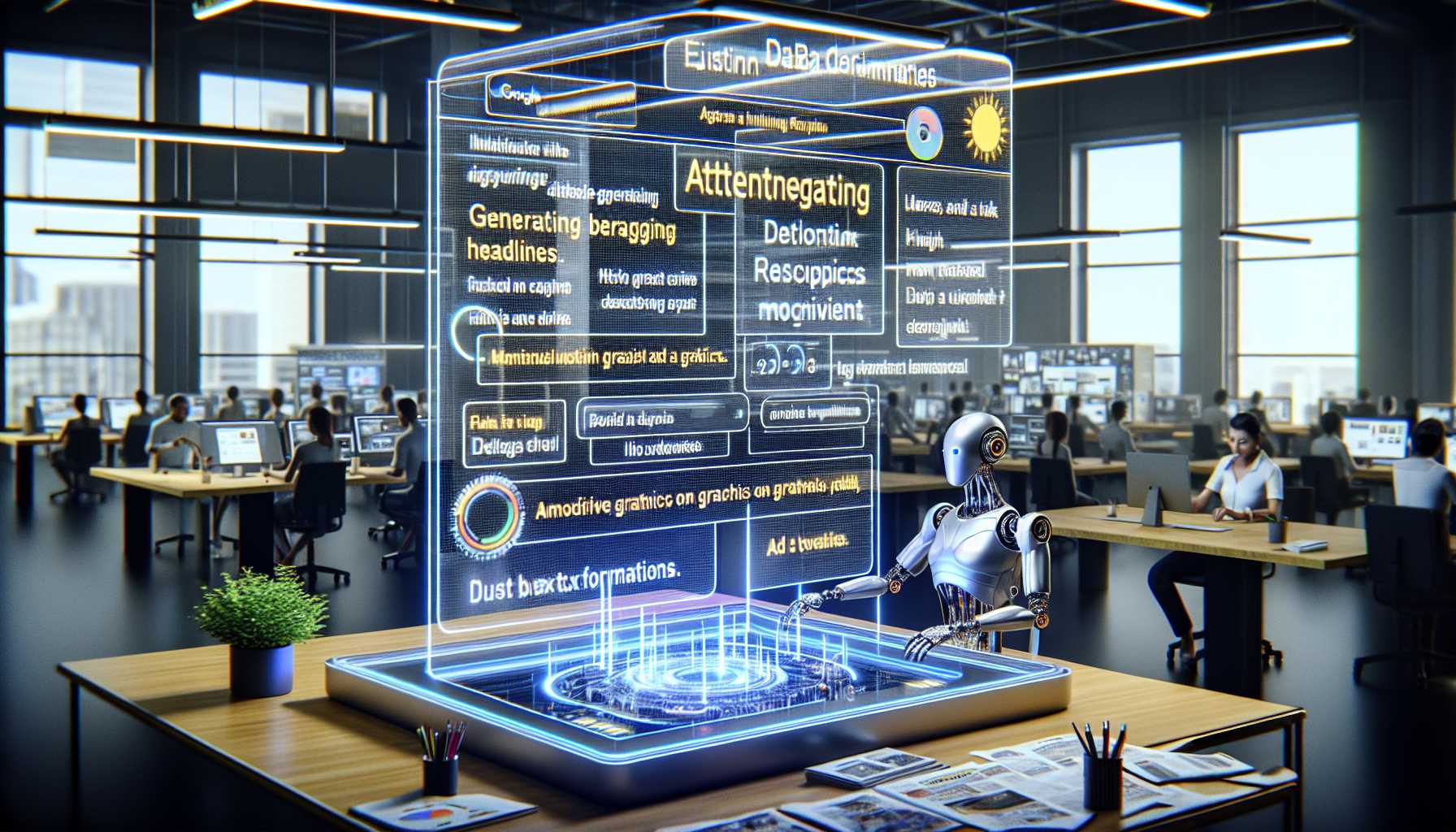Tech giants are fiercely competing to develop the most powerful AI models in 2025. Companies like OpenAI, Google, Microsoft, and others are pushing advancements in multimodal capabilities, integrating text, images, and speech for smarter, more intuitive interactions. They’re forming strategic partnerships and emphasizing ethical safeguards to stay ahead. This race focuses on boosting AI’s versatility, personalization, and real-time data processing. If you want to explore how these innovations reshape industries, keep exploring this fast-moving landscape.
Key Takeaways
- Major tech companies like Microsoft, Google, and Anthropic are investing heavily in developing more advanced, multimodal AI models.
- Google’s Gemini and PaLM models are competing with OpenAI’s GPT-5 and GPT-4o for capabilities and scalability.
- Strategic partnerships and large investments accelerate model innovation and deployment across industries.
- Focus on reducing hallucinations, enhancing personalization, and integrating multi-sensory data drive model performance.
- Ethical safeguards and safety measures are central to differentiating the most powerful and responsible AI systems.
Leading Models and Their Capabilities in 2025

In 2025, leading AI models showcase remarkable advancements in reasoning, multimodal processing, and real-time interaction. You’ll find GPT-5 at the forefront, offering superior reasoning, faster text generation, and support for multiple languages and media types like images and data. OpenAI’s GPT-4o takes multimodality further by integrating voice, images, and audio, enabling emotionally expressive responses and real-time communication. Anthropic’s Claude 3.5 emphasizes desktop interaction and content creation, while Google’s Gemini and PaLM models combine search, vision, and NLP across platforms like YouTube and Android. Microsoft’s heavy investments embed AI deeply into enterprise tools, and Meta’s LLaMA models promote open-source innovation for social media. These models push the boundaries of AI capabilities, transforming how humans and machines interact across various domains. Recent developments also focus on AI ethics and responsible development, ensuring transparency and fairness as these powerful models become more widespread, especially given the vulnerabilities and biases identified in current AI systems. Additionally, ongoing efforts aim to improve model explainability, which is crucial for building greater trust and understanding, as well as addressing potential legal and ethical challenges associated with AI deployment.
Market Adoption and Usage Trends Across Industries

The rapid advancements in leading AI models like GPT-4o and Gemini 2.5 are reshaping how industries adopt and utilize AI technologies. You’ll find that cloud deployment is now dominated by GPT-4o, used by nearly 45% of organizations for multilingual support, security, and conversational tasks. Many businesses leverage GPT-3.5 Turbo for cost-effective text generation, summarization, and chatbots, accounting for over 38% of deployments. Multimodal models like GPT-4o are integrated into workflows for ticket triage, documentation, and knowledge management, boosting operational efficiency. Industries such as healthcare, finance, and customer support are increasingly adopting these models for real-time insights, visual troubleshooting, and accessibility enhancements. This trend underscores a shift toward AI-powered automation that improves security, productivity, and user experience across sectors. Additionally, the integration of AI in business intelligence is accelerating data analysis and decision-making processes through automation, leading to more accurate and timely insights. As the costs and setup requirements vary, organizations are weighing the benefits of these advanced models against their initial investments, emphasizing the importance of cost management. Furthermore, the emphasis on model scalability is becoming essential as companies seek flexible solutions to expand their AI capabilities efficiently. Advances in model customization enable organizations to tailor AI solutions to specific industry needs, enhancing effectiveness and competitive advantage. As organizations seek to optimize deployment, understanding availability and local support hours can also influence their choice of AI partners and cloud providers.
Innovations in Multimodal AI and Human-Computer Interaction

Advancements in multimodal AI are transforming human-computer interaction by enabling machines to process and respond to diverse sensory inputs such as text, images, audio, and video simultaneously. You can now communicate naturally through voice, gestures, or visual cues, making interactions more intuitive. These models combine multiple data types to understand context more deeply, allowing for richer, more accurate responses. For example, GPT-4o offers emotionally expressive voice outputs while Gemini 2.5 handles complex vision-language tasks in real-time. This integration supports applications like visual troubleshooting, accessibility tools, and immersive education. You’ll experience smoother, more human-like exchanges, where your input—whether spoken, written, or visual—is seamlessly interpreted, revolutionizing how you interact with digital systems across industries. Additionally, integrating sensory data enhances the ability of AI systems to mimic human perception, leading to more natural and effective communication experiences. Furthermore, the development of multimodal AI involves combining diverse data streams to create more comprehensive understanding, ultimately enabling more sophisticated and human-like interactions. As these technologies advance, predictive analytics will further refine AI responses to anticipate user needs with increasing accuracy. Meanwhile, ongoing research in machine learning techniques continues to improve how effectively AI models interpret complex multimodal information, pushing the boundaries of human-computer interaction even further. The focus on emotional intelligence in AI development aims to make digital communication more empathetic and context-aware.
Strategic Partnerships and Industry Alliances Shaping AI Development

Strategic partnerships and industry alliances are driving rapid innovation and shaping the future of AI development by combining resources, expertise, and data across tech giants and emerging startups. Microsoft’s $80 billion investment in OpenAI exemplifies how deep collaborations accelerate model capabilities and integration into enterprise tools like Bing and Microsoft 365. Amazon supports Anthropic’s Claude, enhancing desktop AI and content generation for enterprise applications. Nvidia’s focus on AI infrastructure with CUDA and TensorRT supplies the high-performance hardware needed for large models. In China, Baidu and Alibaba lead with Ernie and Qwen, leveraging local data advantages and cloud-commerce integrations. These alliances foster shared research, accelerate deployment, and promote competitive differentiation, ensuring that AI development remains dynamic and strategically aligned across industry leaders and startups alike. Additionally, advancements in processing hardware and algorithms, such as those highlighted in the 1st Home Theatre Projector, are crucial in supporting the increasing demands of large-scale AI models.
Differentiation and Future Directions in the AI Race

As the AI race accelerates, companies are increasingly focusing on differentiation through specialization, scalability, and multimodal capabilities to stay ahead. You’ll notice leaders developing models tailored for specific industries like healthcare, finance, and entertainment, offering targeted solutions that outperform generic models. Scalability is key, enabling seamless integration into enterprise workflows and cloud environments, so your applications remain agile and efficient. Multimodal AI is transforming user interaction, combining text, images, audio, and video for richer, more intuitive experiences. Future directions emphasize reducing hallucinations, improving personalization, and integrating ethical safeguards. You’ll see ongoing innovation aimed at creating adaptable, robust models that serve diverse needs, from real-time data processing to creative collaboration. Additionally, attention to home furnishings ensures that AI-driven interior design and smart home integrations will become more personalized and user-friendly. Incorporating insights from personality traits can also help tailor AI interfaces to better suit individual user preferences, fostering more natural interactions. Staying ahead means balancing specialization with versatility in the evolving AI landscape.
Frequently Asked Questions
How Do AI Models Address Ethical Concerns and Bias Mitigation?
You can address ethical concerns and bias mitigation by ensuring AI models are trained on diverse, balanced datasets and regularly audited for fairness. Developers implement transparency measures, such as explainability features and bias detection tools, to identify and reduce harmful biases. You should also incorporate ethical guidelines into development processes, promote accountability, and encourage ongoing feedback from users to refine AI behavior and uphold societal values.
What Are the Biggest Challenges in Scaling Multimodal AI?
Did you know GPT-4o is used by nearly 45% of organizations? The biggest challenge in scaling multimodal AI is managing the enormous data and computational requirements. You need advanced hardware, efficient algorithms, and robust infrastructure to process diverse inputs like images, audio, and video simultaneously. Ensuring real-time performance while maintaining accuracy, safety, and ethical standards makes this task incredibly complex, demanding continuous innovation and substantial investment.
How Do AI Models Handle Data Privacy in Enterprise Settings?
You need to guarantee AI models handle data privacy by implementing strict access controls, data anonymization, and encryption. Regularly audit data usage and comply with regulations like GDPR or CCPA. Train models on secure, anonymized datasets, and incorporate privacy-preserving techniques like federated learning. By doing this, you protect sensitive information while enabling AI to operate effectively in enterprise environments, maintaining user trust and regulatory compliance.
What Role Does User Personalization Play in AI Development?
You might think AI development is all about raw power, but user personalization shapes its true impact. By tailoring responses, tone, and style, AI becomes more engaging and effective. Personalization creates a seamless, human-like experience, making interactions feel less generic and more intuitive. As you use AI, this focus on individual preferences guarantees smarter, more relevant assistance, ultimately transforming how you work, learn, and connect with technology daily.
How Will AI Models Impact Future Job Markets and Industries?
AI models will transform your job market and industries by automating routine tasks, enhancing decision-making, and creating new roles focused on AI development and oversight. You’ll see increased efficiency in sectors like healthcare, finance, and customer service, but also face shifts in employment patterns. Embrace lifelong learning to stay relevant, as AI’s integration will demand adaptable skills and collaboration between humans and intelligent machines for future success.
Conclusion
As you watch this AI battlefield unfold, it’s like witnessing a high-stakes chess game where every move shapes our digital future. The giants are racing to craft smarter, more human-like minds, transforming industries and opening new frontiers. Stay tuned, because this fierce competition isn’t just about power—it’s about rewriting the very fabric of how we live, work, and connect in a world where AI’s potential is an unstoppable tide, ready to reshape your tomorrow.










